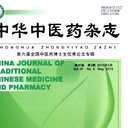Comparison on hypoglycemic and antioxidant activities of the fresh and dried Portulaca oleracea L. in insulin-resistant HepG2 cells and streptozotocin-induced C57BL/6J diabetic mice.
Keywords
Abstract
BACKGROUND
Fresh Portulaca oleracea L. (family: Portulacaceae; POL) has been used as a folk medicine for the treatment of diabetes mellitus for a long time. More bioactive components with higher activity could be retained in fresh medicinal herbs compared to the dried ones. The present study was conducted to compare different antidiabetic activity between fresh and dried POL, including hypoglycemic and antioxidant activities both in vivo and in vitro. Furthermore, in order to explore which components were responsible for the antidiabetic activity, the difference on chemical components between fresh and dried POL was analyzed and compared.
METHODS
Insulin-resistant HepG2 cells induced by insulin were used to evaluate the promoting effect of the fresh and dried POL on glucose utilization in vitro. Streptozotocin (STZ)-induced C57BL/6J diabetic mice were used to compare the differences on hypoglycemic and antioxidant activities of fresh and dried POL, including the fasting blood glucose, glucose tolerance, serum insulin level, malondialdehyde (MDA) level and superoxide dismutase (SOD) activity in vivo. UPLC/Q-TOF-MS method was performed to analyze the difference of antidiabetic components between fresh and dried POL.
RESULTS
Compared with the dried POL extract, the fresh POL extract significantly increased the consumption of extracellular glucose in insulin-resistant HepG2 cells (P<0.05). In STZ-induced C57BL/6J diabetic mice, both fresh and dried extracts decreased markedly the fasting blood glucose (FBG) levels, and improved significantly oral glucose tolerance test (OGTT), as well as enhanced significantly insulin secretion and antioxidative activities (P<0.05; P<0.01). Furthermore, the fresh extract showed stronger antidiabetic activity (P<0.05). The UPLC/Q-TOF-MS analysis results also revealed that the relative contents of polyphenols and alkaloids in the fresh herbs were more abundant than those in the dried POL.
CONCLUSIONS
Our results indicated that both fresh and dried POL possessed antidiabetic activities, besides stronger activity was observed in the fresh herb. These findings provided evidence for the application and development of fresh POL in the treatment of diabetes mellitus.



